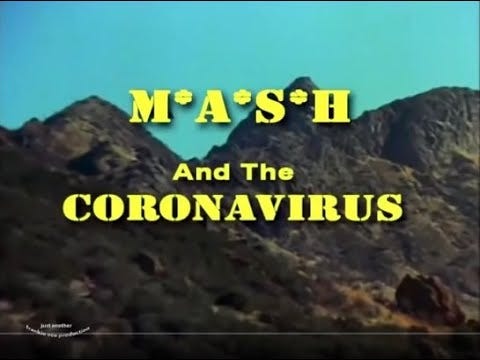During med school, we learned how to “scrub in” and get prepped for surgery. It is a ritual that involves, taking off all jewelry, washing hands, cleaning under nails with a file. The next step is usually timed for 5 minutes of scrubbing each finger, between each finger, the nails, the palms, the tops of the hands, and then the arms up past the elbows. Repeat the other side. The important thing is to keep your hands above your elbows so water doesn’t flow down and contaminate the just scrubbed hands. Rinse off with water, keeping your hands up, only then can you enter the operating room and get handed a sterile towel to dry off each hand, get gowned, and finally get “gloved” by the scrub nurse. Only then are you ready. We have all watched this on TV or in movies. So important for preventing contamination and accidentally infecting the patient. During med school and residency, I got to assist with lots of different surgeries. As a family doctor who delivered babies for years, I often got to scrub in to assist in C-sections on my OB patients, when vaginal deliveries couldn’t happen. I can still feel the wet on my arms and holding them up when I think about it. It is one of the rituals I miss most about stopping that part of my practice.
I have a confession to make. Even though I have known how to scrub in for surgery for more than 30 years, I actually didn’t really learned how to wash my hands correctly, until this pandemic. I used to rub my palms together with soap and water and rinse them, not particularly paying attention to the most contaminated parts- my fingers and finger tips. Now I focus on those. Whew. Apparently I am not the only one of my generation. Kids nowadays are taught to wash hands to the ABC song, so at least they know better than me.
Mask wearing continues to be controversial, which aggravates me. Assisting in surgeries, I learned how to wear masks. We would wear them for hours during complex procedures. We never complained about them or felt we couldn’t breathe. If our arms went below the surgical bed or we touched our face with our hands, we were called on it by whoever witnessed it, or we told on ourselves. We then had to “scrub out” and leave the room and start the scrubbing in process again. For the patient. We did these things for the patient.
I know that many mask deniers are claiming it decreases oxygen or increases breathing carbon dioxide or other conspiracy theories agains mask wearing. We really shouldn’t have to be having a conversation about this. A surgeon writes about mask wearing in operating rooms in an editorial in The Washington Post today. We have been wearing masks in surgery since the late 1800’s. I think they have been proven safe by now.
We wear masks to protect other people, they help protect us a little when we wear one. I am hoping more people will start to accept this. The numbers are going up in almost every state, deaths are rising again, mask wearing should be mandatory every where. But Americans are different. I found this article fascinating about regional differencesaffected by centuries old migration/settlement patterns. This could explain the differences in responses and cries for liberty in different states. So frustrating that the public good is not a priority.
We know masks work. Wearing one shows you care. To protect yourself, remember to avoid being indoors where people are not masked. Please, that is the riskiest situation you can be in.
Wash your hands, cover your nose, keep safe six, have some fun outdoors, and watch these MASH bits to remind yourself about hand washing.
https://www.washingtonpost.com/health/your-mask-feels-uncomfortable-get-over-it-as-a-surgeon-i-know-how-vital-they-are/2020/07/10/17fb8e40-ba36-11ea-bdaf-a129f921026f_story.html
https://www.infectioncontroltoday.com/view/how-perform-surgical-hand-scrubs
https://www.pressherald.com/2020/07/05/how-the-geography-of-the-pandemic-is-determined-by-centuries-old-regional-differences/


